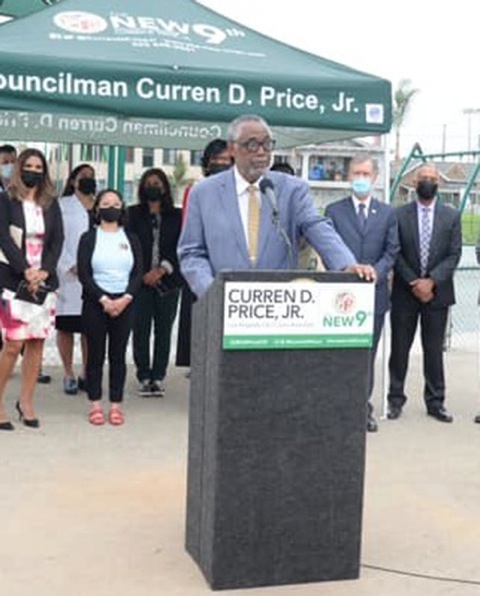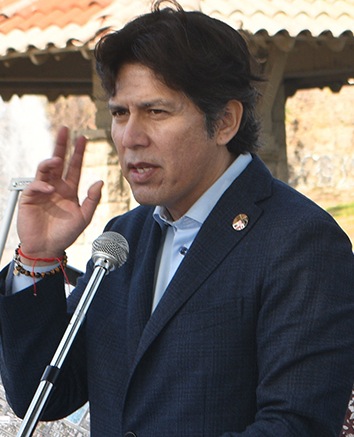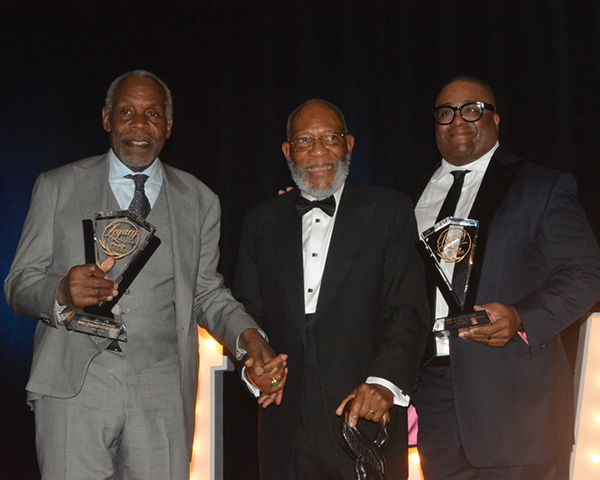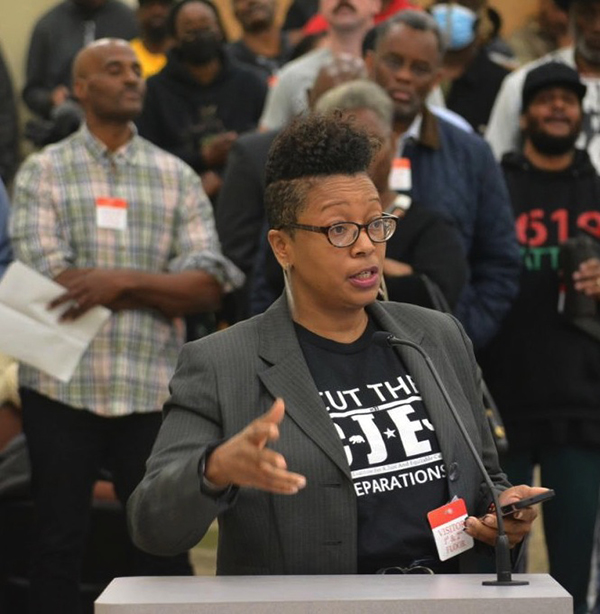Wave Staff and Wire Reports
LOS ANGELES — City Councilman Curren Price has secured $5 million to help a South Los Angeles neighborhood recover from a massive explosion set off by an LAPD bomb squad error that injured 17 people and forced many residents from their homes.
The Los Angeles City Council approved a motion Sept. 21 to provide the funds.
“Our neighbors face an uphill battle and a tough road ahead for years to come,” Price said when he introduced the motion on Sept. 1. “Long before this disaster, they faced systemic inequality, structural barriers and racial disparities that have been exacerbated in the wake of this disgraceful LAPD action.
“We need our own version of a Marshall Plan that is going to bring stability to the lives of those affected, revitalize and uplift our neighborhood once and for all.”
The motion, which was seconded by Councilmen Marqueece Harris-Dawson and Mark Ridley-Thomas, instructed the chief legislative analyst and the city administrative officer to identify $5 million for the recovery effort and establish a Neighborhood Recovery Center with additional services to support residents’ needs, including infrastructure improvements, mental health services, job and workforce development, access to children’s services and business grants.
Price’s motion requests that some of the funding for the relief effort come from the LAPD’s $1.76 billion budget.
The June 30 detonation of a large cache of fireworks on East 27th Street, near San Pedro Street, sent 17 residents and first responders to hospitals, destroyed a bomb squad truck and damaged 22 residences, 13 businesses and 37 vehicles.
Emergency Management Department General Manager Carol Parks told the Los Angeles Police Commission Sept. 21 that 88 people are still displaced from their homes awaiting repairs.
According to Michael Hoffman, special agent in charge of the U.S. Bureau of Alcohol, Tobacco, Firearms and Explosives Los Angeles office, the LAPD’s containment vessel was designed to handle repeated detonations of 19 pounds of TNT equivalent at a time or a single detonation of 33 pounds of explosives before being returned to its manufacturer for analysis.
But the LAPD bomb squad miscalculated the amount of fireworks placed into a containment vessel, resulting in a massive explosion. Officers loaded the truck with 39.85 pounds of explosives, Hoffman said. LAPD personnel visually estimated the weight of the explosives to be about 16 pounds.
Following the blast, Price provided relief to displaced and impacted residents through a $1 million emergency relief fund using dollars from his council office.
The city has received about 200 claims for damages from community members, Parks told the Police Commission this week.
Twenty-six claims have been paid, and about 25 are pending payment. The City Attorney’s Office is waiting for more information before processing 128 of the claims.
Residents protested Sept. 16 in front of their boarded-up homes, which remained unrepaired by the city, to demand the city accelerate the timeline for the repairs.
In the wake of the explosion, LAPD Chief Michel Moore has changed several policies in the department.
Moore said the department will no longer use a total containment vessel to detonate fireworks in residential locations. The LAPD will pursue acquiring a designated site in or near the city to take explosives for safe detonation.
The department also will require that all explosives the bomb squad attempts to detonate be weighed first, and “checks and balances” will be put in place to ensure those calculations are correct, Moore said. Personnel responsible for the explosion are no longer working on the bomb squad, Moore added, saying he would make a determination regarding discipline. The names of the officers have not been released.
Officers with the U.S. Bureau of Alcohol, Tobacco, Firearms and Explosives conducted more than 40 interviews with residents, bomb squad members, LAPD personnel and witnesses at the scene of the explosion. It also reviewed surveillance video for a report that found that the explosion “was accidental and was caused by overloading the [total containment vessel] with more explosives than it was designed for during a single detonation.”
The explosion occurred after the department seized the fireworks from Arturo Ceja III, 27, a resident of East 27th Street. He was arrested and charged with illegally transporting tons of explosives. Ceja planned to sell the fireworks throughout the neighborhood in celebration of the Fourth of July, according to the U.S. Attorney’s Office.
Ceja pleaded not guilty to the federal charges on Aug 17.













